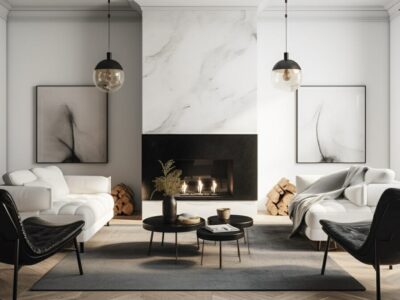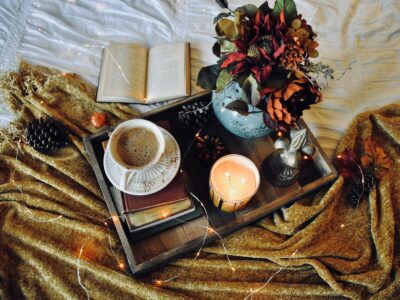Can you imagine a world without colors? The colors we see around us have a profound impact on how we feel while sitting in our cozy room or anywhere in the house. The sight of the blue sky lifts our spirits, while the blooms of the spring brighten our day. Again, natural green makes us feel alive, while hues like red and yellow energizes us. Colors can also be a powerful vehicle for telling a story. Without much effort, we all use them to craft our message for the world, giving them a glimpse of your artistic and imaginative self.
Color in home décor is hugely significant. Working out a palette that fits your style is tricky business. Finding furnishings that match the surrounding colors is a bigger challenge. But it can be a journey you will thoroughly enjoy.
Is Color Coordination Important?
While our favorite color might govern your choice, a single shade is not enough to design the whole room. What you combine it with and how the whole combination is spread out all across the room is of utmost importance. The color-combination can make or break the look of the room. There are some broad rules that can be safely followed to create the look you desire.
Warm and Cool Colors
Colors can be broadly grouped into categories, depending on the feelings they evoke. Although each of us would react differently to different shades, most of us will experience more or less the same emotions when exposed to a certain group. Shades of red, yellow, and oranges are often associated with warmth, while darker shades of green, blue, and purple are considered to be cool. Warm tones evoke a sense of happiness, while the deeper ones depict depth and peace. A lot of designers prefer to adhere to a specific group to set the tone of the décor. Paring shades from the same group creates a nice effect.
For example, you can combine teal with pale green or blue will create an enchanting oceanic look. To create a balanced spread of the color, use teal liberally on the walls and sparingly on the carpet and cushions. For a dramatic effect, use stark white shutters on the windows. Shutters will provide you a lot of control on privacy,
Make Good Use of the Color Wheel
If you look at a color wheel, you will find that the colors on the opposite sides of the wheel can work well with each other. Complementary colors are used to build a focal point in the room, like on the rugs or the sofa. Complementary colors are usually used with restraint to avoid overkill.
If you have a heart set on that brown sofa, use it against the backdrop of cream walls and chairs. Use a soothing combination of cream and brown on the cushions and windows. Similarly, use green pillows when you get a cream sofa. Zebra blinds are a great option, if you are looking to use two colors in your window coverings. Zebra blinds come in the unique combination of sheer and solid vanes which work together to provide a delicate blend of light control and privacy. The solid vanes can also be positioned to cut off the light completely and achieve total privacy. These blinds are a great option for creating a combination of complementary colors.
Monochromatic Theme
A monochromatic theme can be very useful in creating a smart and sophisticated look. It works very well in a small room, and the effect is stunning. As you use the same shade, just in different tones, it will be easy to hide storage and other furniture, and create an illusion of space.
For such a setup, you can have the curtain colors match the wall. This way, the curtain will not detract from the central design, and give a unified effect. Curtains would also add a visual relief to the monotonous look, adding a feminine and mystical touch to an otherwise practical setup. The single material design of curtains is also great for insulation and cutting off the light. You can depend on these beautiful window treatment solutions to keep your room comfortable all year round.
Go Rustic
There is a rising trend toward echoing the natural tones within the confines of our interiors. Earthen hues, matched with wooden and other rustic furnishings, make a delightful and cozy atmosphere. Brown, beige, tan, and rust, are some of the most popular choices for recreating that earthen look.
The blind that best works for this look is woven wood blinds. Made from natural fibres, these blinds match perfectly with the rustic décor. The sheer design traces attractive patterns across the floor and the walls, creating a tropical feel. These blinds keep the heat out, making the room naturally cool and comfortable.
Experiment with Black and White
Black, white, and to some extent grey, are considered to be safe colors. These colors can be combined with a wide range of colors. If you want a minimalistic décor, combine a single vibrant color with white or grey, with a splattering of black. The effect will be a chic and neat room, which oozes style from all angles. Black will act as a balancing factor, that will tone down the brightness and add character to the décor.
For instance, you can use a mustard sofa against a grey wall, with white and grey check rug, and dark brown furniture. Use black borders in the cushion, side tables, artifacts, and wall décor. To unify the colors, cover your windows with cellular blinds. These blinds come in sleek, light-weight designs which are great for insulation and cutting off UV rays. These sleek blinds would be a great addition to a room aiming for that minimal look. Depending on the material, you will be able to achieve varied levels of light filtration, raging from muted glow to the blackout effect.
No matter what color combination you select, ensure a smooth transition into the other rooms as well. Reusing the same combination, with a different treatment, could help build a harmonious flow all over the house, uniting art and practicality in one smooth stroke.










Comments